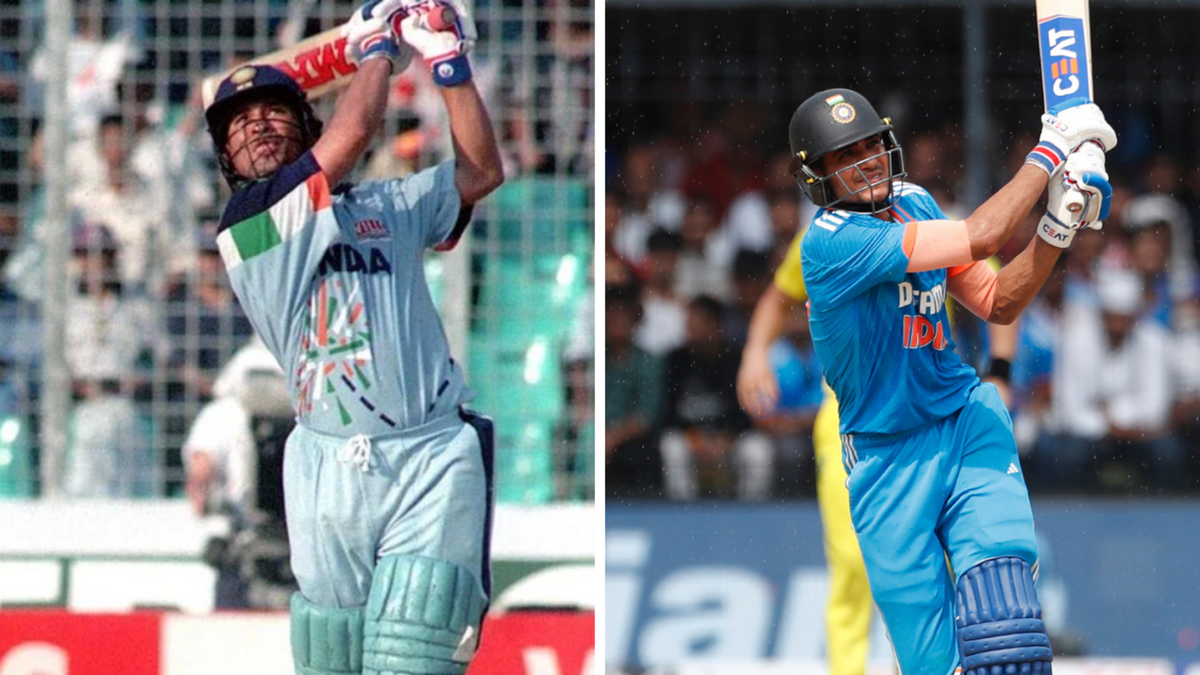
Shubman Gill is 665 runs away from breaking Sachin Tendulkar’s world record of 1,894 runs in a calendar year. If he does not get there, perhaps no one will.
In 2023, Shubman Gill has scored 1,230 runs at 72.35 and a strike rate of 105. These are not ordinary numbers.
Asif Khan of the UAE, the next name on the 2023 runs chart, is on 934. Among batters from ICC Full Members, only Pathum Nissanka (819) has crossed the 750-mark.
Only Ricky Ponting (1,424 runs at 79.11 in 2007) and Virat Kohli (1,460 at 76.84 in 2017) have got more runs at a higher average in a single year, while only David Warner (1,388 at a strike rate of 105.4 in 2016) has had more runs at a quicker rate. As is evident, no one is common to both sets.
All this has made Gill a realistic challenger to Sachin Tendulkar’s world record calendar year tally of 1,894 runs, set in 1998.
India will play once more against Australia and then nine league games at the World Cup. If they qualify for the knockouts, there will be one or two more games. They will also play three ODIs against South Africa.
If Gill remains fit and India do not rest him and nothing unforeseen happens, he will get at least 13 ODIs to go past Tendulkar. He needs to score a shade over 51 runs per match to do that – significantly below his current average for the year.
If not Gill, then perhaps no one
Gill is the only batter since the global pandemic to breach the 1,000-run mark in ODIs in a single calendar year.
Between 1996 and 2019, there was not a single year where at least one batter did not hit four figures. In these 24 years, there have been 128 entries (some of them got there multiple times) – at over five a year.
In 2019 alone, the last pre-pandemic year, six men made it, including three who went past 1,300. Since then, the world has moved away from ODIs.
A T20 World Cup in each of the first two post-pandemic years shifted the focus towards Twenty20 cricket. Ahead of the World Cups, teams prepared by playing the shortest formats as much as possible.
At the same time, rapid growth of franchise cricket also contributed towards a shift away from the two longer formats.
For example, to accommodate the SA20, South Africa were fine to forego the Australian tour of 2022/23, even if that meant risking a direct qualification chance for the ODI World Cup.
Boards tried their best to ensure their best cricketers stayed back for the Tests. The World Test Championship perhaps played a role in keeping Test cricket relevant, even if two-match series became more and more common.
As the “prestige format” of men’s cricket, many players still prioritise the longest format. Perhaps they will continue to, for some time.
Squeezed between the two, ODIs began to lose relevance, especially with no World Cup or Champions Trophy to entice teams to play more bilateral series.
The lockdown was responsible for restricting 2020 to 44 men’s ODIs, but in 2021, that count rose to only 71. For perspective, the count read 150 in 2019. The count shot up to 161 in 2022 – the second-most in a calendar year after 191 in 2007 – but that number needs to be put to scrutiny. Perhaps as an effort to revive ODIs, the ICC ensured more Associate nations played in the format.
If one restricts the calendar-year counts to matches involving at least one Full Member, the numbers read 119 (2018), 128 (2019), 34 (2020), 51 (2021), and 93 (2022). The decline is evident.
With the World Cup around, there was obviously going to be a reversal to this trend in 2023, just like there will be another as teams prepare for the 2024 T20 World Cup. With limited time in the calendar, teams will prioritise the two limited-overs formats depending on the next global event. The Asia Cup already does that.
Thus, the only chance a batter may get to emulate Tendulkar or, if he seizes the record, Gill, will be in a year with a World Cup or, at best, a Champions Trophy.
It is a fair assumption, but the 2025 Champions Trophy is set to be played in February 2025. And teams will switch from T20Is to ODIs only after the T20 World Cup in June 2024.
That will still give them seven months – but that will be split across two calendar years. If anything, teams will try to play more ODIs in January and February.
The schedules for the 2027 World Cup, the global ODI tournament after that, have not been drawn yet, but by the time it happens, the focus will further move away from the format.
Gill has been extraordinary in 2023, but India’s schedule has allowed him to rack up the records. Whether any team manages to again remains to be seen.








